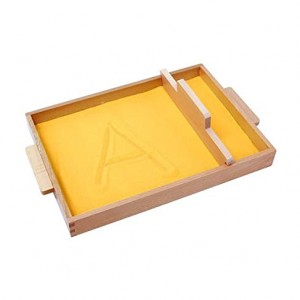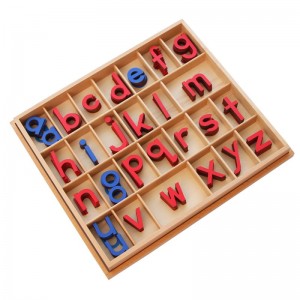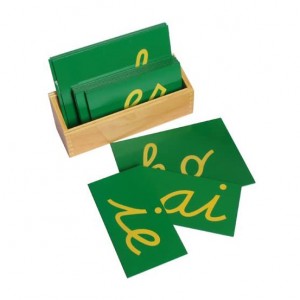Montessori Sand Tray- Letter Formation Sand Tray Montessori Letters Writing Montessori Teacher Tranning Center Tools
Sand Tray with Clear Base and Smoothing Tool, Wooden Tray with Sand and Straightener
For early mark making, creative work and early writing skills. To develop co-ordination, fine motor skills and concentration.
The impermanence of a picture or word drawn in the sand gives the child an opportunity to experiment freely with no sense of failure: they can quickly smooth the sand over to erase and re-try.
The clear base creates an ultra smooth surface and allows for brightly coloured backdrops to be placed in the recess beneath the tray. The abrasive nature of sand will scratch the surface over time.
This Montessori sensory material will help your little one to write their first letters through touch, playing with the sand. The wooden box contains a smoother to make it easy to erase what has been written and start over.
Tracing on sand helps the child develop confidence in forming letters and numbers in free hand style.
When the box is filled with clean sand it provides the perfect tactile medium that the child can use with their finger to draw a letter, number or symbol shape.
They can use a writing tool to write in the sand to prepare to use a pencil on paper.
For any Montessori classroom and home school, this is a good tool for general writing teaching.
DETAILS
Guide children into writing success with our smoothly beechwood sand tray with outer handles for easy carrying.
• 18 oz. Yellow colored sand is included
• Dimensions: 15.3 x 9.75 x 3.3 Inches
• Recommended Ages: 3 years and up
ELG:
Reading: children read and understand simple sentences. They use phonic knowledge to decode regular words and read them aloud accurately. They also read some common irregular words. They demonstrate understanding when talking with others about what they have read.
Writing: children use their phonic knowledge to write words in ways which match their spoken sounds. They also write some irregular common words. They write simple sentences which can be read by themselves and others. Some words are spelt correctly and others are phonetically plausible.








